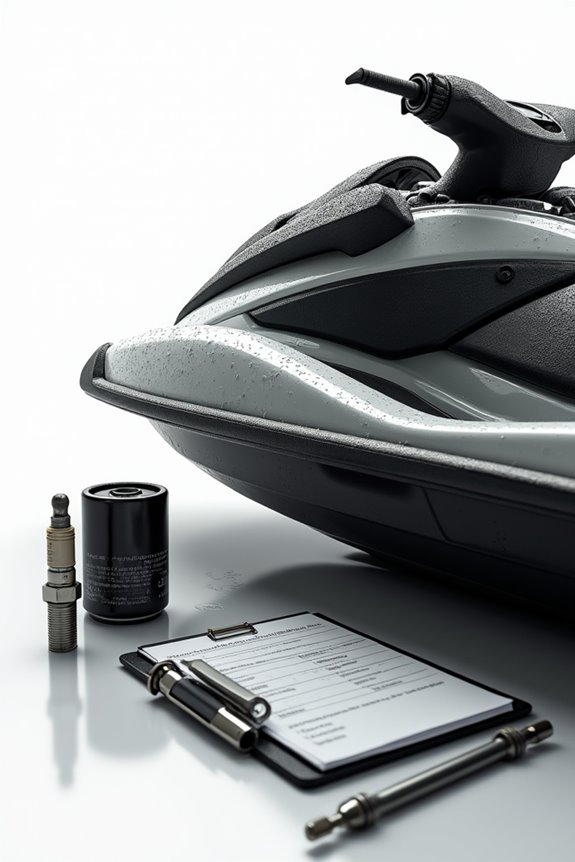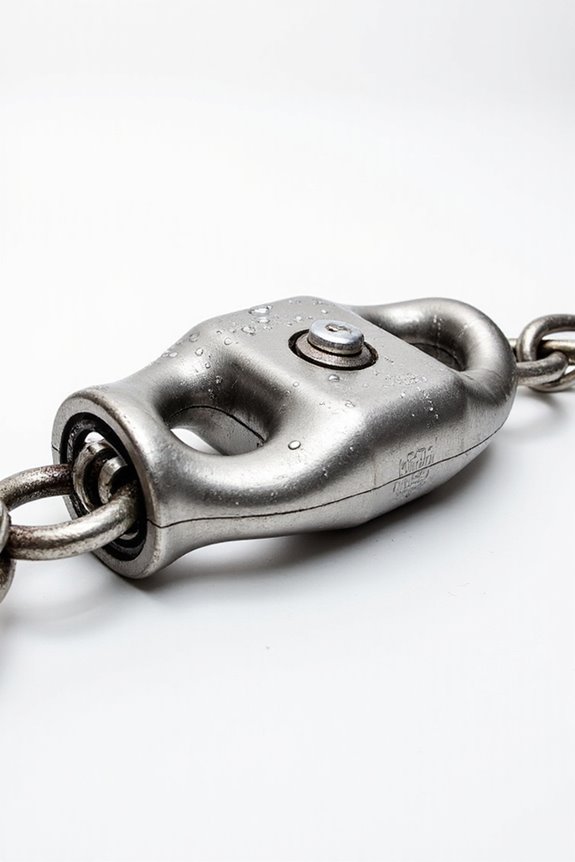Keeping our jet skis in top shape means regular love: a pre-ride check for loose wires or under-the-hood leaks, oil changes every 25–50 hours using marine-grade oil, plus yearly spark plug swaps if your starts feel sluggish. Don’t forget lubrication and battery care, especially with saltwater pounding the parts. Secure those drain plugs tight and dry out the hull to dodge mold. Curious about prepping for storage and the perfect re-start? We have you taken care of next.
Key Takeaways
- Conduct pre-ride inspections and test runs to check for leaks, loose parts, and system responsiveness before every outing.
- Change engine oil and spark plugs according to manufacturer recommendations, typically every 25-50 hours or annually.
- Regularly inspect fuel systems and hull for cracks, leaks, and clean fuel filters to ensure safe operation.
- Maintain battery health by cleaning terminals, using AGM batteries, and applying corrosion-resistant sprays seasonally.
- Drain water completely, secure drain plugs properly, and inspect for moisture to prevent mold and water damage during storage.
Pre-Ride Inspection Checklist
Before we even think about jumping on the jet ski, a solid pre-ride inspection is a must—that’s our first line of defense against a day spoiled by unexpected breakdowns. Visual inspections help us spot any cracks, dents, or loose panels that might turn our ride into a surprise adventure—minus the fun. Don’t forget to peek under the hood for loose wires or leaks; it’s like giving your jet ski a quick once-over before you hit the waves. Now, what about steering controls? We want to make sure the handlebars move smoothly, without any annoying looseness, and that the throttle snaps back just right. Checking all buttons and switches on the dashboard is essential too—because no one wants to play guess-what’s-working when out in the water.
Routine Engine Oil Changes
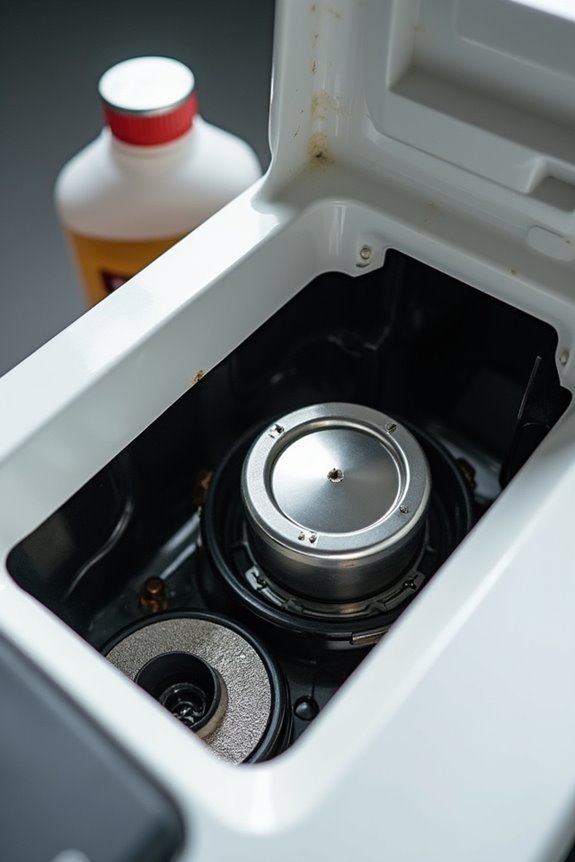
Keeping on top of routine engine oil changes is one of the simplest ways we can keep our jet skis humming smoothly without unexpected hiccups. Wondering about oil change frequency? Most recommend every 50 hours or annually, whichever comes first, but some models, like Kawasaki, suggest every 25 hours to protect that engine love. And don’t forget—oil type selection matters! We stick to high-quality, marine-specific oils with NMMA FC-W certification, avoiding regular car oil that just won’t cut it under wet, high-RPM conditions. Synthetic oils are favorites for their durability, but even these need swapping on schedule. To keep our rides reliable and our wallets happy, following the manufacturer’s guide and changing the oil and filter regularly should be part of our maintenance ritual. After all, happy engines mean more endless waves!
Spark Plug Care and Replacement
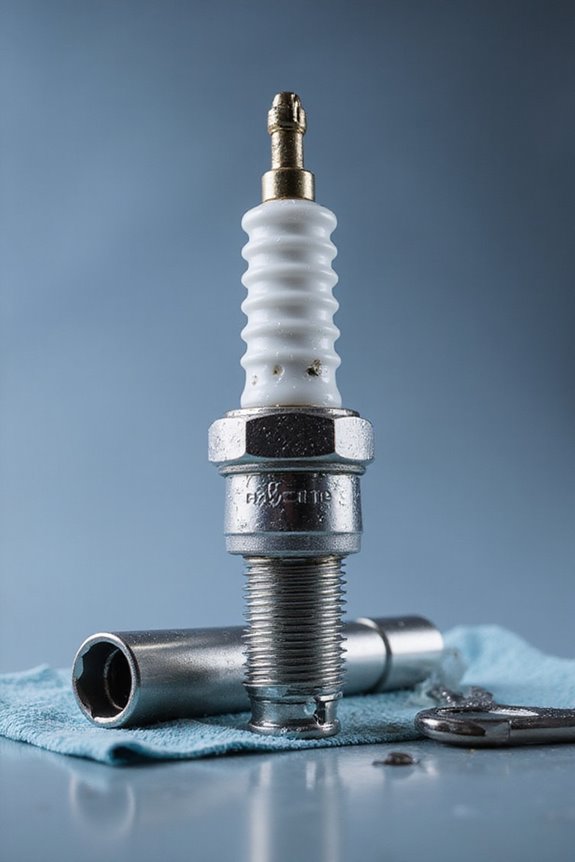
A solid set of spark plugs is one of the unsung heroes keeping our jet skis revving like they should. Whether you’re dealing with different spark plug types or just want that smooth, reliable start, caring for these little sparks is key. First, always cool your engine and disconnect the battery—safety matters. Using the right spark plug tools, like a socket and ratchet wrench, makes removal tidy and hassle-free. Got a rough idle or slow start? Might be time to inspect or swap those plugs, especially since replacing them yearly is a smart move—cheap, easy, and effective. Don’t forget to clean the area around plugs before you pull them out; dirt’s the enemy here. Together, staying on top of spark plug maintenance keeps your jet ski happy and ready for the next splash.
Proper Lubrication Techniques
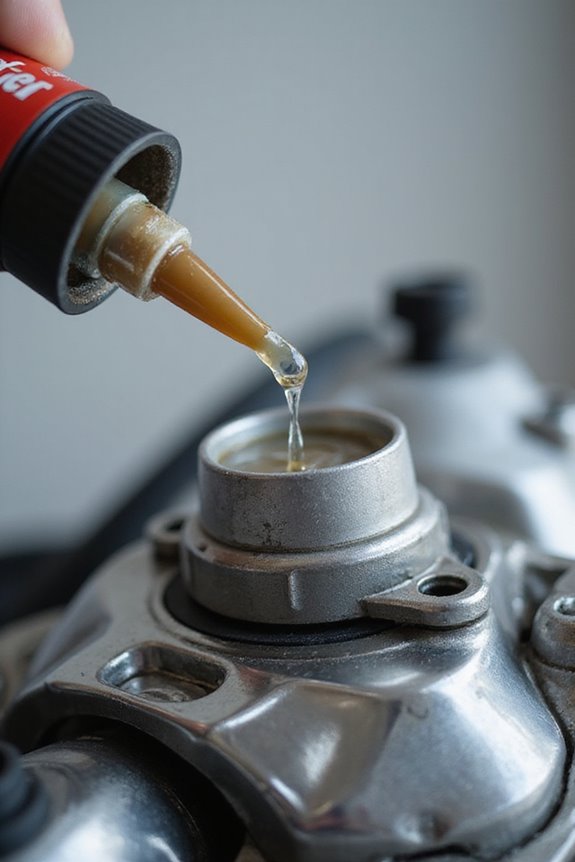
While lubrication might not be the most exciting part of jet ski care, it’s definitely one of the most important if we want to keep things running smoothly. We all know how annoying squeaks or stiff joints can be, right? Using proper lubrication techniques, like applying silicone spray on moving parts and fittings, protects against corrosion without harming seals or plastic. Don’t forget about anti-corrosion sprays on metal parts exposed to saltwater — these maintenance products are lifesavers, especially after long rides. It’s smart to do this at least once every season to prevent rust and wear. Plus, letting the spray air out before use avoids any unnecessary fire hazards — safety first! Regular lubrication keeps our rides smooth and reliable, making every outing more fun.
Battery Maintenance Tips
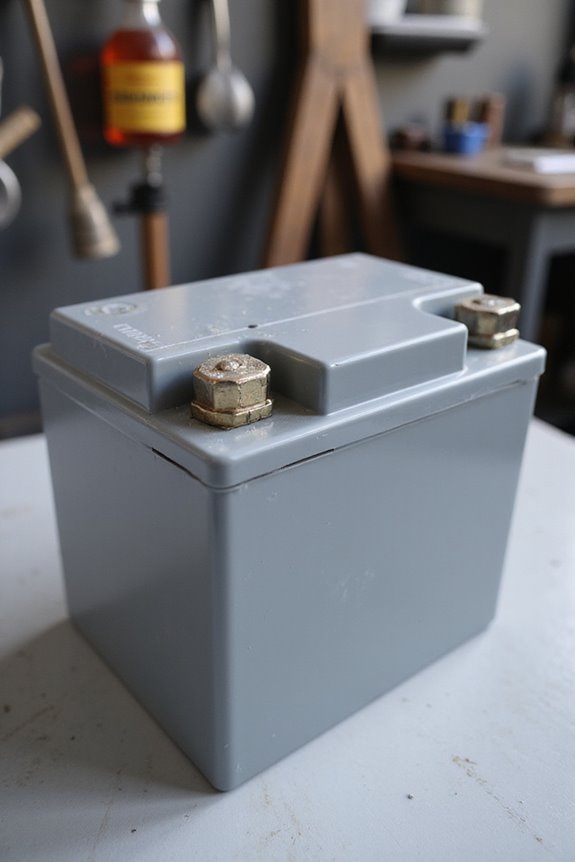
Three key things we need to focus on when it comes to jet ski battery maintenance are climate adaptation, cleaning, and proper storage—sounds simple, right? First, choosing the right battery types matters: AGM or vibration-resistant batteries handle rough waters better, while those in hot climates benefit from higher reserve capacities to avoid quick discharge. Next up, corrosion prevention is vital—rinsing saltwater-exposed batteries with fresh water and salt terminator helps, plus regular cleaning of terminals with a baking soda mix keeps everything humming smoothly. When storing your battery, remember to keep it dry, ventilated, and out of direct sunlight. Remove it from the ski if you’re storing it long-term, and using a battery maintainer keeps it in peak shape. Additionally, it’s essential to check the self-discharge rate of your battery to avoid unexpected power loss during inactivity. Sounds like a bit of work, but hey, our jet skis will thank us!
Cooling System Maintenance
Since jet skis rely heavily on their cooling systems to keep engines from overheating, giving this part some regular TLC is a smart move. After every ride, we flush the engine with fresh water, using the flush port to clear out salt and debris—it’s like a mini spa day for our ride. Don’t forget hose inspection; cracked or loose hoses can sneakily cause leaks. For those with closed-loop systems, timely coolant replacement is key—usually every one to two years—to keep things flowing smoothly and avoid overheating surprises. Keep an eye on the temperature gauge and listen for odd noises; they’re your best hints that something needs attention. Staying on top of cooling maintenance means more fun on the water and fewer “uh-oh” moments behind the scenes. We’ve got this!
Seasonal Winterization Steps
Now that we’ve covered keeping your cooling system in tip-top shape, it’s time to think about giving your jet ski some serious TLC before winter hits. Seasonal winterization steps are essential for jet ski maintenance, especially if you want a smooth start come spring. First, we’ll drain or stabilize the fuel to avoid nasty surprises, then swap out the engine and pump oil—fresh fluids are like spa treatments for your engine. Don’t forget to flush the exhaust with antifreeze; freezing water? No thanks. Let’s also clean and dry storage compartments—moisture’s the enemy here! Before tucking it away, a quick inspection for leaks, lubricating moving parts, and protecting surfaces will do wonders. Winter storage doesn’t have to be scary if we prep right—after all, wouldn’t you want your jet ski ready to roar when the season rolls back?
Best Practices for Storage and Protection
Although storing your jet ski might seem as simple as parking it and calling it a day, there’s a bit more to it if we want to keep it in top shape through the off-season. Choosing the right storage location is key—indoor spaces shield your jet ski from harsh weather better than outdoor spots. But if indoor isn’t an option, no worries; just make sure to use high-quality protective covers that block dust, UV rays, and moisture. Elevating the jet ski on racks or lifts helps keep it dry and critter-free. Don’t forget to remove the battery and store it on a smart charger. Little steps like these prevent costly surprises when you’re ready to hit the water again. After all, who wants a mountain of maintenance before the fun starts?
Essential Safety and Inspection Procedures
Before we even think about revving up the engine, it’s crucial that we get familiar with some essential safety gear and thorough inspection routines. Following safety regulations isn’t just about ticking boxes—it keeps us and our crew safe while we enjoy the water. Ever checked if your life jackets are Coast Guard-approved and fit like a glove? How about that emergency engine cutoff lanyard—your jet ski’s best friend in a pinch? Inspection importance can’t be overstated: from scanning the hull for debris, checking oil and coolant, to testing the kill switch and ensuring your fire extinguisher’s in place. Don’t forget sound-signaling devices and secure storage compartments. Together, these steps keep us compliant and confident, making every ride smooth and incident-free. Ready to hit the water responsibly?
Re-Activating Your Jet Ski After Storage
When it comes to waking up our jet ski after a long nap, there’s more to it than just turning the key and hoping for the best. First off, we need to give the fuel system some love—filling the tank with fresh, stabilized fuel and checking fuel lines for any cracks or leaks is key. Nobody wants surprises out on the water! While we’re at it, let’s not forget a thorough hull inspection. Cracks or dents can cause real trouble, so taking a close look protects our ride and our plans. After draining any water from inside and securing drain plugs, a quick test run in a safe spot seals the deal. With these steps, we’re ready to hit the waves confidently and keep our jet ski happy all season long!
Frequently Asked Questions
How Do I Identify Unusual Noises During Jet Ski Operation?
When we notice unusual engine sounds during operation, we start noise troubleshooting by pinpointing where the sound’s coming from—whether it’s grinding or rattling—so together, we can maintain our jet ski’s performance and keep riding confidently.
What Are Signs of Impending Engine Overheating?
Like a warning beacon, a rising temperature gauge and dropping coolant levels signal danger. If we see these signs together, it’s a call for our jet ski family to act before overheating steals our ride.
How Often Should Jet Ski Trailer Maintenance Be Performed?
We should perform trailer tire maintenance monthly and trailer brake inspection at least every three months. Staying on top of these keeps us safe and connected as a community that values smooth, worry-free rides together.
Can I Use Automotive Oil Instead of Marine Oil for My Jet Ski?
Back in the day of horse-drawn carriages, we’d all agree: marine oil beats automotive oil for jet skis. It’s specifically designed to protect against water, rust, and high RPMs—so let’s keep our rides safe and smooth!
What Are the Best Cleaning Products for Jet Ski Exteriors?
We recommend using Boat Bling’s Hot Sauce and Vinyl Cleaner for effective cleaning techniques. These products offer protective coatings that shield surfaces from salt and UV damage, helping us keep our jet skis looking sharp and lasting longer together.

